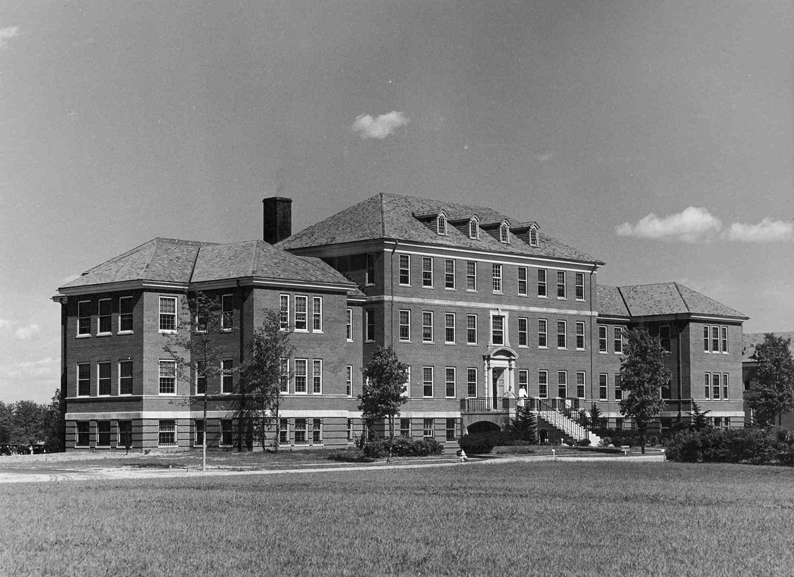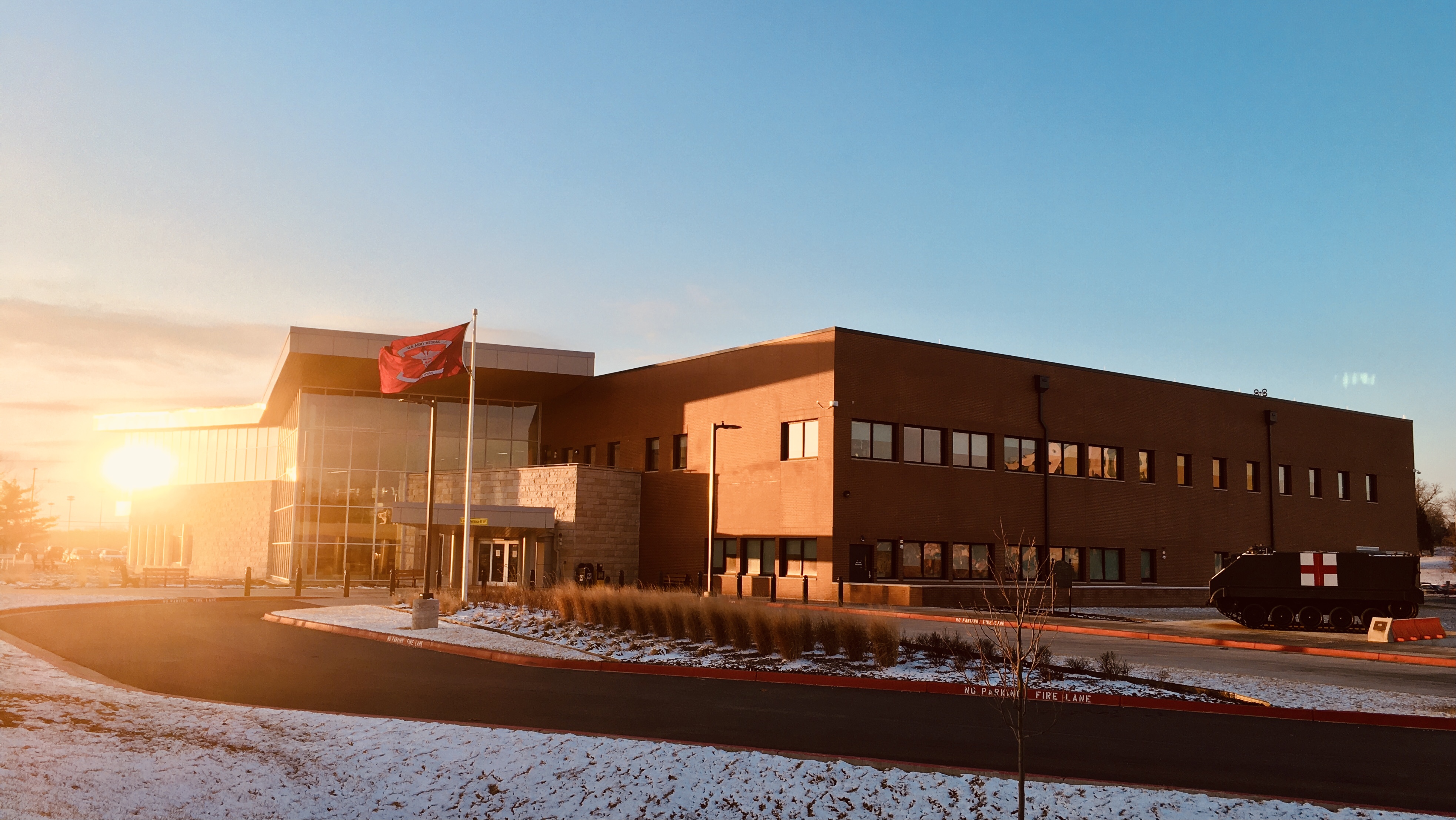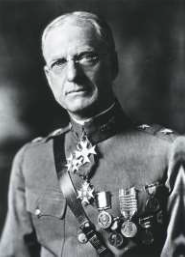Unit Awards
Army Superior Unit Award
PERIOD: 1 January 2019 – 22 January 2020
U.S. Army Medical Department Activity, Fort Knox displayed outstanding meritorious service providing non-sop access to care. They performed a multitude of phenomenal achievements by moving and consolidating an 800-bed hospital into a newly built health clinic. The unit’s dedicated and professional leaders, staff, and soldiers worked together successfully to accomplish these goals, all while maintaining unparalleled commitment to excellence, top-quality health care, and customer service. The dedication and outstanding performance of U.S. Army Medical Department Activity, Fort Knox is in keeping with the finest traditions of military service and reflect great credit upon themselves, the Army Medical Department, and the United States Army.
Army Superior Unit Award
PERIOD: 1 January 2014 – 31 December 2014
The United States Army Medical Department Activity, Fort Knox accomplished, in an exceptionally outstanding and unprecedented manner, a multitude of phenomenal achievements by supporting the Reserve Officer Training Corps Cadet Summer Training Mission, the 2014 Warrior Care and Transition Program Award of Excellence, instituting the Army Wellness Center, the opening of the Binter Street Pharmacy, gaining National Committee of Quality Assurance Certification, and prominent contributors to the Nation’s Warfighters through the outlying clinics. The dedicated and professional leaders, staff, and Soldiers worked together successfully to accomplish these goals, all while maintaining unparalleled commitment to excellence and top-quality health care and customer service. The outstanding efforts of the United States Army Medical Department Activity, Fort Knox reflect great credit upon the unit, the Northern Regional Medical Command, the Army Medical Department, and the United States Army.
Army Superior Unit Award
PERIOD: : 1 September 2006 – 30 September 2007
The United States Army Medical Department Activity, Fort Knox displayed outstanding meritorious service in support of the Global War on Terrorism. The unit preformed the difficult and challenging mission of medically supporting the mobilization and demobilization of nearly 202,700 Soldiers, and it served as the only Army Medical Activity to perform this mission. Additionally, the unit provided the primary care for cadre, trainers, and deploying units in austere and remote locations while simultaneously managing the care and Medical Evaluation Board process for hundreds of Wounded Warriors. During this same period, the unit also achieved the U.S. Army Medical Command’s third lowest processing time and second lowest percentage error return rate. The actions exhibited by United States Army Medical Department Activity, Fort Knox are in keeping with the finest traditions of military service and reflect distinct credit upon the unit, the Army Medical Department, and the United States Army.
Our History

In 1918, the year of Camp Knox’s birth, the base hospital, a World War I cantonment building, was completed on the present site of Lindsey Golf Course near the Gold Vault. The Hospital burned down in 1928 and medical services were relocated to the World War I guesthouse on Bullion Boulevard.

A brick Hospital, located on “E” street, (which is now 1st Calvary Regiment Road) was built in 1934 and served as the Ft Knox Post Hospital until 1942, when two mobilization Hospitals were constructed. The Hospital complex known as the old cantonment hospital was located along Dixie Street in the area now occupied by the Dependent School facilities and the Morand Manor Housing area.

As part of an Initiative to modernize military medicine and to meet the needs of a larger standing Army, construction began on modern facilities across the Army. The Army’s flagship hospital was completed in 1957, easily becoming the tallest Structure on Fort Knox. The large multi-storied hospital was dedicated as Ireland Army Community Hospital (IRACH) on 01 April 1957 in Honor of Major General Merritte W. Ireland, the former Surgeon General of the Army. IRACH served the Fort Knox Community until its demolition in 2022.

Ireland again adjusted to the changing needs of the Fort Knox community and Defense Department mission requirements, in September 2016 Ireland Army Community Hospital (IRACH), was redesignated Ireland Army Health Clinic (IRAHC). A smaller two-story-tall clinic, located a few hundred yards to the east, opened its doors January 2020. The modern-day Ireland Army Health Clinic is a state-of-the-art outpatient facility serving the Fort Knox community providing world class healthcare, producing a ready medical force and a medically ready force.
 Medical Department Activity - Fort Knox maintains facilities at:
Medical Department Activity - Fort Knox maintains facilities at:
• Fort Knox, KY (Ireland Army Health Clinic)
• Richmond, KY (Bluegrass Army Depot - Occupational Health Clinic)
• Camp Atterbury, IN (U.S. Army Dispensary)
• Warren, MI (Occupational Health Clinic at Detroit Arsenal)
• Camp Grayling, MI (ECT Site Support)
Biography of Merritte Weber Ireland
 The longest-serving Surgeon General since the Civil War, Meritte W. Ireland took the reins right at the end of WWI, immediately had to demobilize to a peacetime Army but made sure that even as the AMEDD shrank it focused on the future rather than returning to the status quo.
The longest-serving Surgeon General since the Civil War, Meritte W. Ireland took the reins right at the end of WWI, immediately had to demobilize to a peacetime Army but made sure that even as the AMEDD shrank it focused on the future rather than returning to the status quo.
Born in 1867 in rural Indiana, the son of a physician, Ireland skipped college and went straight to the Detroit College of Medicine, graduating after a normal three-year course. However, he felt himself inadequately prepared and completed two internships, when even one was unusual. He studied another year at Jefferson Medical College, one of the leading schools in the US. In 1891 he joined the Army Medical Corps and had five years’ service with troops in various small posts such as Fort Riley, Kansas, Fort Apache, Arizona, Fort Stanton, New Mexico, and Presidio, California.
The 1898 Spanish-American war and the subsequent insurgency in the Philippines (1899-1902) brought him a variety of responsible positions, in which he shone in all. During the invasion and liberation of Cuba he was assigned to the Reserve Divisional hospital in Cuba, which he helped make successful despite the challenge of being an ad hoc unit. During the fighting he went into action where he was recommended for promotion for bravery under fire. After Cuba was liberated, CPT Ireland was reassigned to Long Island, New York as executive officer for the temporary Camp Wickoff, which was the Army’s highest-profile hospital. The camp hospital treated the troops evacuated from Cuba with malaria, yellow fever, and typhoid. These were America’s heroes, isolated because of infectious diseases on the doorstep of New York City and its aggressive newspapers. The hospital was thrown together from green timber with patients arriving before the buildings were ready. There were bad headlines, but the hospital commander, William Forwood, and Ireland quickly brought order from chaos and avoided an even worse public relations problem. With tensions building in the Philippines, CPT Ireland reassigned as the surgeon for 45th Volunteer Infantry that promptly deployed. From December 1899 to April 1900, he saw constant field service with his regiment, participating in a dozen engagements in the provinces of Cavite, Camarines, and Albany in southern Luzon. He received several commendations for bravery but no medals; the only medal the Army had at the time was the Medal of Honor. Recognized for his exceptional talent he was selected to serve as head of medical supply for the whole force in the Philippines, with additional non-medical administrative duties for the military government, receiving the commendation of the Philippine high command.
In 1902, he returned to the US and was promptly brought to the Surgeon General’s Office by the new incumbent, Robert O’Reilly. who broke the precedent of having senior officers as his immediate staff (at the time the staff consisted of only three or four additional officers) and brought in promising junior officers so they would learn the administrative and policy aspects of the AMEDD where Ireland excelled. For the next ten years he was involved developing and implementing policies with personnel (officers and enlisted), supplies, establishment of a medical reserve, and the mandatory vaccination of the Army, among other issues. Law at the time required rotation between Washington offices and the field, he returned to the Philippines in 1912, this time as a lieutenant colonel and brigade surgeon. He returned to the US in 1915, this time to Fort Sam Houston. He served as the sanitary inspector for the Southern Department, a cavalry division surgeon cavalry division based at Fort Sam, then Southern Department surgeon. Revolutions and civil war in Mexico meant the Southern Division was the most active in the Army, with regular and National Guard mobilizations along the Rio Grande in border, Ireland and his hospital at Fort Sam Houston provided medical support for BG John Pershing’s Punitive Expedition into Mexico.
When the US entered World War 1 on 06 April 1917, Pershing was selected as the commander of the American Expeditionary Force (AEF), and requested Ireland as his Chief Surgeon, but was told to take COL Alfred Bradley, senior to Ireland and already a medical observer in London; Ireland would be the deputy. However, Bradley was often unwell (he would be medically retired in April 1918), and Ireland was the driving force in the AEF Surgeon’s Office. Ireland was involved with every aspect of medical care, medical readiness, and medical support. His excellent work made him a natural choice for promotion, seeing him promoted to Colonel 15 May 1917, Brigadier General 16 May 1918, and to Major General assistant Surgeon General AEF on 08 August 1918.
When the Surgeon General, General Gorgas had to retire for age in 1918, MG Ireland was so obviously the natural choice that various medical officers senior to him recommended him to Pershing as the next Surgeon General. On 30 October 1918 he was sworn in as Surgeon General while still recovering from influenza, which had become a pandemic at the end of the war.
With the fighting ending on 11 November, Surgeon General Ireland had no war to support, but had to demobilize the AMEDD while providing medical care to the wounded (most of whom had recently been wounded and would be hospitalized for several months) and making sure that all out-processing soldiers had medical exams that would prevent future false claims against the government. This was before there was a Veterans Administration to provide long-term care, and Army hospitals would have these patients well into the 1920s.
Ireland laid out three goals for the AMEDD:
1) select and prepare troops for withstanding the rigors of war
2) preserve health of the troops
3) treat the wounded for return to duty or discharge.
These were deceptively simple, with many steps needed to bring them about. Ireland had lived through three hasty mobilizations, the Spanish-American War, the Punitive Expedition, and WWI. He had seen many temporary and emergency developments in the AEF that were worthwhile, and he began to build new organizations in the AMEDD. Throughout his tenure, money was tight (at one point he was personally approving each civilian hire) and within those constraints he had to balance current readiness against future capabilities. Ireland was confirmed as Surgeon General in 1918, reappointed in 1922 when GEN Pershing was Chief of Staff, and reappointed in 1926 and 1930 by successive Chiefs of Staff who had seen less of him in WWI than they had seen his efficient stewardship of the AMEDD after the war.
Ireland secured funds for several new general hospitals (which he started naming for famous medical officers), Fitzsimons in Denver, William Beaumont at Ft Bliss, Sternberg in the Philippines, Tripler in Hawaii, and new facilities at Letterman (San Francisco) and Walter Reed. He had the School of Aviation Medicine made permanent so the Army could take proper care of its fliers. He built an Army Medical Center out of teaching and research organizations and the Walter Reed General Hospital; it was the nation’s first research-oriented medical center and clinical teaching center. While the Army needed medical generalists who could be the lone doctor assigned to some remote post, he allowed a few doctors to become specialists; typically, they traveled around to hospitals rather than patients being moved to them. He made sure the AMEDD got some VA patients to extend the variety of patients and their conditions for teaching purposes; for similar reasons he got more beneficiaries accepted. Ireland ensured that the AMEDD was able to receive a variety of beneficiary types, such as veterans, retires, and dependents, some years over 30% of total patients seen. This provided ideal teaching conditions for medical staff to build readiness. These initiatives also helped the AMEDD justify force structure and generate much needed revenue.
Similar to today, sufficient personnel were a major concern. He maintained strong links with the civilian medical profession, as a President of the American College of Surgeons and a governor of the American College of Physicians amid other organizations. For him, the medical profession was a source of reservists for patient care, and he regularly corresponded with medical school deans and wrote articles for medical journals, encouraging medical (and dental and veterinary) ROTC programs. He arranged paid internships at Army hospitals for promising medical graduates, an effective recruiting tool. (He also preserved an Army School of Nursing, despite it’s horrible retention rate.) He revamped the SGO staff to include dental and veterinary officers to provide better coordination and direction for those corps and expanded the SGO from the tiny personal staff to 33 officers, plus civilian employees. Nurse recruiting was largely outsourced to the American Red Cross, but his efforts helped nurses receive more pay, relative rank, retirement benefits. Ireland was successful in recruiting more nurses to serve in the Army, he placed them in smaller hospitals which raised the standards of care. Ireland fought for the development of a Medical Administrative Corps to relieve doctors of the administrative burden and improving patient care, and a Sanitary Corps to replace doctors in some laboratory and other medical professional work. However, during this lean time the ‘Enlisted Force of the Medical Department’ was abolished, ending the experiment that started in 1887 with the Hospital Corps being handled separately from the line Army, although men could still enlist specifically for the AMEDD. There were always fewer personnel than needed, but that was true across the Army, and Ireland’s two biggest personnel problems were few doctors for the many small posts, and too few cadres to keep the Army Reserve and National Guard units trained.
To further elevate military medicine and to develop Army doctors into military leaders, Ireland established the Medical Field Service School, he later established an advanced course for field-grade officers, as well as an NCO course. An Equipment Laboratory was established to develop field equipment and adapt civilian material where possible. They began at the front lines with the first-aid packet (SEE STORY) and worked their way back, echelon by echelon. The AMEDD worked with the Army’s developing mobilization plans to not only know how many hospitals it would need, and when in the process, but also their equipment requirements. These might sound like obvious steps now, but this was the first time the US had seriously tackled the problems. He re-established the Army Medical Bulletin and shifted it from an occasional publication to a regular one, providing a reliable distribution route for AMEDD information. To support his arguments for AMEDD force structure he commissioned studies on casualty rates in WWI; with data he could justify both field medical units and TDA hospitals for long-term recovery. He did not neglect the ‘Army’ part of ‘Army medicine’ and arranged for medical officers to attend the Infantry School; Command and General Staff School; Army War College; and the Army Industrial College, as well as arranging for some training with industry. Under his leadership AMEDD officers were now able to attend the CGSS, AWC, and AIC faculty. Ireland expected the Regular Army doctors to be wartime senior staff and commanders of medical units (reservists would provide most of the patient care). He deliberately put more emphasis on Army education for RA officers than clinical development. There were a few courses in summers for reservists, but most could only take correspondence courses.
Ireland knew the importance of the AMEDD in military operations, but paradoxically his increasing the infrastructure (general hospitals, a medical center, the MFSS) reduced the number of personnel immediately available for the field. Certainly, Congress had cut military funding (and the Army Air Corps siphoned off even more) but in 1926 Ireland had to admit that his AMEDD was not as ready for war as the AMEDD of 1917. The start of the Great Depression in 1929 further tightened AMEDD’s budget, but there was no threat on the horizon. On 31 May 1931 Merritte Ireland reached the mandatory retirement age, leaving an AMEDD with short-term problems but with the long-term infrastructure to expand for the success it would see in WWII.
Sources
Biographical file, ACHH research collection
Ireland, M.W. “The duties and responsibilities of the Medical Department in the formulation of mobilization plans,” Mil. Surgeon 55/1 (July 1924), 1-9.
Ireland, M.W. “Preparedness and supplies,” Military Surgeon 56/??? (??? 1925), 362-5.
Ireland, M.W. “The Medical Service in a Theater of Operations,” Military Surgeon 62/5 (May 1928), 573-91.
Mary Gillett, The Army Medical Department 1917-1941. Washington DC: US Army Center of Military History, 2009.
Editor's Note:
After his retirement, Major General Ireland continued to serve as president of the Army Mutual Aid Association until 1947 when deteriorating health forced him to resign after 18 years as president and 32 years as a director. He was recipient of a number of honorary degrees--from Jefferson Medical College (1919), University of Michigan (1920), Gettysburg College (1922), Syracuse University (1935), Wayne University, and the International Y. M. C. A. College. Among the number honors he received were the William Freeman Snow Award for Distinguished Service to Humanity from the American Social Hygiene Association in 1945 for his reorganization of the Army Medical Department and the citation for distinguished service to humanity from the Medical Society of the District of Columbia in April 1945. On February 23, 1939, he delivered the William Potter Memorial Lecture at Jefferson Medical College, speaking on the subject "Medicine's Debt to the United States Army."
He remained actively involved with the Army Medical Department after his retirement as an advisor to his successors as Surgeon General and to the leadership of the War Department. This was especially so after George C. Marshall became Chief of Staff on September 1, 1939. Both Ireland, as Chief Surgeon of the Punitive Expedition into Mexico in 1916-17 and of the American Expeditionary Force (AEF) in France in World War I, and Marshall were closely associated with General John J. Pershing during and after World War I and knew each other well. Marshall often called on Ireland to advise him on matters pertaining to the Army Medical Department and military medicine. He played a significant role during the searching examination of the AMEDD and of the relations between the Services of Supply and the Office of The Surgeon General in 1942-43 by the Wadhams Committee and in the selection of Brigadier General Norman Kirk to succeed Major General James Magee as The Surgeon General in 1943. Especially during the latter years of MG Magee's tenure as The Surgeon General, Ireland came to play a larger unofficial role because of the steadily worsening personal and official relations between Marshall and Magee.
During his later years, Ireland was beset with serious physical ailments which severely limited his activities. First painful conditions in his knee joints limited him. Then, after several cerebral hemorrhages, he passed his last years as a complete invalid and bed-ridden at Walter Reed Army Hospital. He died at Walter Reed on July 5, 1952 and was buried at Arlington National Cemetery on July 9th following funeral services in the Memorial Chapel at Walter Reed Army Medical Center.
In his obituary note on Maj. Gen. Ireland in the Annals of Internal Medicine (1952), Maj. Gen. George Armstrong, then The Surgeon General, wrote: "General Ireland was largely responsible for the development of modern concepts of field medicine during World War I and his accomplishments made possible many of the later medical achievements of World War II and Korea. . . . Both in his position as Chief Surgeon of the American Expeditionary Forces in France and, later, as Surgeon General of the Army for many years, General Ireland proved himself one of the great leaders of the Army Medical Service, and an unequaled administrator in the field of military medicine. His example while on active duty and his wise counsel following retirement were a source of constant inspiration to those who succeeded him as Surgeons General of the Army."
Distinctive Unit Insignia

Distinctive Unit Insignia. Description: A gold color metal and enamel insignia 1 3/16 inches (3.02cm) in height consisting of a representation of the Philippine sun, gold with white rays, the disc bearing a maroon cross moline voided gold; surmounting the upper rays an arched band divided horizontally scarlet, white and blue, and surmounting the lower rays a maroon scroll inscribed "BECAUSE WE CARE" in gold letters.
Symbolism: The cross and the sun stand for the U.S. Army Medical Department Activity at Fort Knox. The cross in general symbolizes service and care; the particular type of heraldic cross used in the design simulates four hearts and alludes to the motto. The sun, source of our light and heat, has long been associated with the healing arts. The disc of the sun also represents a gold coin in reference to the gold reserve at Fort Knox where the unit is located. In addition, the use of the Philippine sun stands for the distinguished Philippine service of Gen. Ireland for whom the Ireland Hospital was named. The scarlet, white and blue band simulates the American Expeditionary Force arm band which Ireland wore as a member of Gen. Pershing's staff during World War I. The colors maroon and white are used for organizations of the Army Medical Department.
Background
The distinctive unit insignia was originally approved for the Ireland Army Hospital Dec. 31, 1969. It was re-designated for the U.S. Army Medical Department Activity, Fort Knox on Sept.4, 1973.